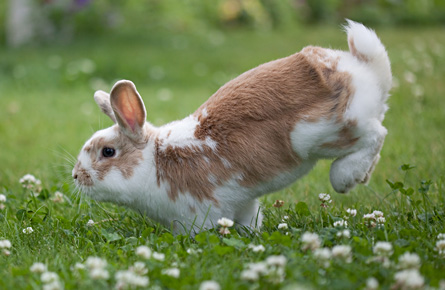Protect your Pet's Health & Well-being with Eastcott Vets
 Neutering your dog is an important consideration, and it can be done for both male and female dogs. For male dogs, the procedure is called castration, which involves the removal of both testicles.
Neutering your dog is an important consideration, and it can be done for both male and female dogs. For male dogs, the procedure is called castration, which involves the removal of both testicles.
Female dogs undergo spaying, which involves the removal of the ovaries and, in some cases, the uterus. In females, we typically recommend spaying before their first season, usually around six months of age. If your female dog has already experienced a season, we recommend waiting for three months after it before scheduling the surgery. For male dogs, neutering is usually performed when they reach six months of age.
At Eastcott Vets, we perform neutering surgeries using the latest keyhole techniques, ensuring minimal incisions and quicker recovery times.
Contact Us Today Or Call Us on 01793 528341
Dog Neutering In Swindon: The Key Benefits
Neutering provides many health and behavioural benefits for both male and female dogs:
-
Reduces the risk of prostatic diseases in male dogs
-
Decreases aggression between male dogs
-
Prevents womb infections that can be fatal in female dogs
-
Eliminates false pregnancies in females
-
Lowers the risk of mammary cancer in female dogs if spayed before their third season
-
Prevents testicular cancer in males and ovarian cancer in females
-
Reduces roaming behaviours and the tendency to escape
-
Eliminates the possibility of unwanted pregnancies
-
Reduces scent marking behaviours
Should I Let My Dog Have One Litter Before Spaying?
This question comes up often, but there are no health benefits to allowing your dog to have a litter before spaying. The risk of unwanted pregnancies and the health complications associated with overpopulation outweigh any perceived advantages.
General Anaesthetic for Dog Neutering
Neutering your dog requires a general anaesthetic, and at Eastcott Vets, we have strict safety measures in place. During the procedure, a Registered Veterinary Nurse (RVN) will monitor your dog to ensure they are safe and comfortable. Although anaesthesia comes with some risks, these are generally very low, especially for young, healthy dogs.
We also offer a pre-anaesthetic blood test to check for any underlying health issues, ensuring that your pet is in the best possible health for surgery. Before the surgery, your dog will be given medication to help relax them, as well as two types of pain relief. Our veterinary team will remain with your dog at all times during the process.
Dog Neutering: Your Pet Will Stay The Day With Us
On the day of the procedure, please bring your dog on a secure harness or lead; during the admission appointment, we will discuss the procedure and go through the consent form. Please note we must gain a signature from the registered owner (over 18) or authorised agent on the consent form. Your dog, cat or rabbit will be admitted as a ‘day patient’, and they will be discharged later that day once our team are happy with how your pet has recovered.
During your pet’s discharge appointment, the team will go through everything you need to know about caring for your pet after their surgery and their pain relief medication. We are always at the end of the telephone for you and your pet, so please contact us if you have any further questions once you have your pet settled back at home.
Pet Health for Life Plan Offer
Eastcott Vets Pet Health for Life plan members can claim a 10% discount off any neutering procedure. Our Pet Health for Life plan offers preventative health, and you could be saving each year on what you spend on your pet treatment wise.
Discover Our Pet Health for Life Plan
Dog Neutering In Swindon: Book Your Appointment Today
Ready to do the right thing for your beloved pet? Book a neutering appointment online todat at Eastcott Vets using our simple online booking system.
Book Your Appointment Online Today
Further reading:
Neutering your cat | Neutering your rabbit
Dog Neutering FAQs
What is puppy spaying?
Puppy spaying is a procedure where a female dog has her ovaries and, in some cases, her uterus removed. This stops her from being able to reproduce. For male dogs, the corresponding procedure is castration, which involves the removal of both testes.
What age can my puppy be neutered?
We generally recommend neutering puppies at around six months of age. For females, spaying can be done before their first season, which is usually around six months, or after their first season. Male dogs can also be neutered from six months onward.
What is the recovery time after dog spaying?
After spaying, female dogs typically need at least two weeks to fully recover, though this may vary depending on the breed. We will provide you with detailed aftercare instructions to help manage pain relief and ensure a smooth recovery process.
What are the benefits of neutering my dog?
Neutering your dog can offer a wide range of benefits, such as:
- Preventing unwanted pregnancies
- Reducing the risk of certain cancers (testicular in males, mammary in females)
- Preventing prostatic diseases in males
- Reducing aggressive behaviour and roaming
- Decreasing the chances of serious health issues, like uterine infections in females
- Lessens scent marking in male dogs
Is it necessary for my dog to have a litter before spaying?
There are no known health benefits to allowing your dog to have a litter before spaying. In fact, spaying early can help avoid complications related to reproduction and can reduce overpopulation.
What happens if my dog is over six months old or already has had a season?
If your female dog has already had a season, we typically recommend waiting for about three months after it before proceeding with spaying. We will ensure the best timing for the surgery to minimise risks.







